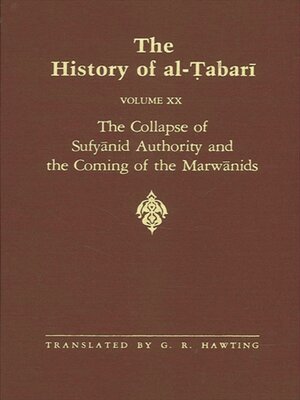The History of al-Tabari Volume 20
ebook ∣ The Collapse of Sufyanid Authority and the Coming of the Marwanids: The Caliphates of Mu'awiyah II and Marwan I and the Beginning of The Caliphate of 'Abd al-Malik A.D. 683-685/A.H. 64-66 · SUNY Series in Near Eastern Studies
By G. R. Hawting

Sign up to save your library
With an OverDrive account, you can save your favorite libraries for at-a-glance information about availability. Find out more about OverDrive accounts.
Find this title in Libby, the library reading app by OverDrive.



Search for a digital library with this title
Title found at these libraries:
| Library Name | Distance |
|---|---|
| Loading... |
This volume covers the vital early years of the second Muslim civil war, when the Umayyad caliphate seemed on the point of extinction. That it survived had much to do with the vigor of the Umayyad Marwān ibn al-Hakam whose initial restoration of Umayyad authority is described here in some detail by al-Ṭabarī's sources. In the chaos and confusion of the civil war, however, developments took place that were to prove significant for the future of the Umayyad calphate, indeed for the early history of Islam in general. Among them, the first manifestations of large-scale tribal divisions among the Arabs, together with the development of support for the descendants of the Prophet as the only legitimate rulers, were particularly important and receive special attention. For this period, al-Tabari's History is a fundamental source.
The material collected by al-Ṭabarī frequently makes lively and colorful reading, and the annotations that accompany this translation attempt to clarify and make more explicit the sometimes allusive and compressed information provided by al-Ṭabarī and his sources. Since the standard edition of the text was made, at the end of the nineteenth century, a significant number of other sources have been published, which often make possible a more exact reading of al-Ṭabarī's text. For these reasons, it is hoped that this translation will appeal to those interested in the period but who have little or no Arabic and will also prove useful to students and scholars who are capable of reading the Arabic but will appreciate the suggested textual amendments and improvements and the elucidatory comments.







